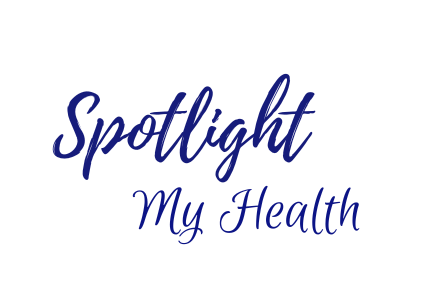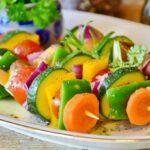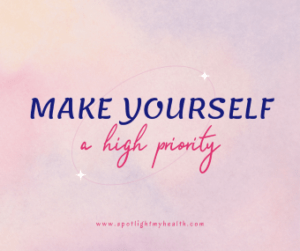What Are Essential Oils
Everyone can use some essential oil recipes for this coming wintertime. Essential Oils are a highly concentrated liquid. This liquid is extracted from the stems, flowers, bark, roots, and leaves of different plants. Basically, the whole plant can be used to extract these oils and should be distilled to end up with a totally pure product.
The extraction method used to obtain these oils is important to pay attention to. Cold-pressing or steam distillation are the best methods used as they both keep the integrity of the molecular structure of the plant intact. Therefore, you will have top-notch essential oils and can expect to get the results that you are looking for from your oils.
Ownourawesome.com is a participant in the Amazon Services, LLC Associates Program, an affiliate advertising program designed to provide a means for this site to earn advertising fees by advertising and linking to Amazon.com and affiliated sites.
How to Choose Essential Oils
Don’t choose your company without knowing how they handle the whole process. You want to be sure you are getting 100% pure, high quality essential oils.
There are a few points of interest to pay attention to when you are choosing your essential oils. Look for the following bits of information as you do your research for the company you want to purchase your oils from.
- The extraction methods which I mentioned above
- Oils are completely unchanged in any way (no additives)
- GC/MS testing reports are provided to the public
- Proper bottling and labeling are used (dark amber or blue bottles like these)
- Where are the plants sourced from
- Are the plants replaced as soon as harvested
Try not to be persuaded by the price of the oils or the popularity of certain companies. Neither of these points are reasons to go with a specific company.
For more on essential oils extraction and what to look for when choosing a brand of oils, see my post on Basics of Essential Oils.
Always consult your doctor before using essential oils on children under five or while pregnant or breastfeeding. All content on this website is for educational and informational purposes only. It does not replace advice or directives from your doctor. I am not a doctor and the FDA has not evaluated this post, products or recipes. This post is not intended to diagnose, treat, cure, or prevent any disease. Also, this post is not to be considered as a recommendation or an endorsement or advice of any medical or health treatment.

How to Use Essential Oils
Basically, essential oils can be used three ways.
- Topically: You can use a roller bottle to apply the oil directly to your skin or just rub a dab or two on your skin. For instance, when I have a sinus headache, I dab a bit of peppermint essential oil on both temples to help ease the headache.
Good places to apply essential oils are the soles of your feet. The pores here are a good open door into the rest of your body. Other options are along your spine, inside part of your wrists, along the sides of your neck or on each temple. Placing oils along the sides of your neck and temples also presents a way of inhalation along with the topical absorption.
Don’t forget that some oils are very strong, so dilute by adding a drop to a bit of a carrier oil will help.
- Aromatically: This method has to do with smelling the aroma of the essential oil. Smell the oil right out of the bottle or you can add drops to a diffuser. Or try a few drops on a cotton ball to sniff, as needed. This is one of the quickest and easiest ways to use these oils in your home.
- Internally: Add oils to foods or liquids. You just have to know which essential oils can be taken internally and which cannot. Taking essential oils internally can be pesky, because of the awful taste of some of these oils. My suggestion for these oils is to add a few drops to a spoon of honey then add to a cup of tea.
If you don’t mind the taste of the oil you want to use, then just put a drop in the back of your mouth.
All three methods are accessible forms of essential oil therapy. One of the best ways to use your essential oils is by making a roller-ball blend using one or more essential oils and a carrier oil. Carrier oils are simply slightly heavier oils that are considered a “base” oil. Carrier oil examples are: coconut oil, almond oil, jojoba oil, olive oil, etc.
One of the most common carrier oils is fractionated coconut oil. Fractionated means it this oil won’t solidify as easily as normal coconut oil which makes it a good carrier oil to use with your roller ball essential oil recipes. See What Are Carrier Oils for a better explanation of what carrier oils are and how to use them.
Essential Oils to Keep on Hand
Staples
Lavender: Calming, promotes relaxation and sleep, helps with seasonal support, nervous system relaxant, has analgesic properties, anti-inflammatory and attacks viral and bacteria that cause fever.
Lemon: Home cleaner, stain and adhesive remover, eliminates house odors, energizing and uplifting, nasal support, used to enhance water and helps with morning sickness.
Peppermint: Digestive support, will wake you up, seasonal support, antioxidant properties, contains menthol, has cooling affect.
Tea Tree Oil: This oil is great for keeping hair, skin and nails healthy. Can be added to hand sanitizer. Is good as an insect repellent, eliminating nail fungus and to soothe skin inflammation. It can boost immunity and relieve stress.
Cinnamon: Supports healthy metabolic function and helps to maintain a healthy immune system. Dilute with fractionated coconut oil to create a warming massage for cold, achy joints. Cinnamon also helps with blood sugar levels, has antibacterial properties, is a mood enhancer and naturally repels insects.
Eucalyptus: Has many medicinal properties. Eucalyptus is found in many OVC medicines for colds, flu, throat sprays and pain relievers. I suspect that is because of its anti-inflammatory, antiviral, anti-bacterial and anti-fungal, expectorant capabilities.
Rosemary: Can enhance memory, relieve anxiety, and boost your immunity system. Can also help sagging skin.
Orange: Uplifting, promotes a healthy immune system, excellent cleaning additive. Add to a diffuser with some frankincense to help calm a racing mind. Helps people to relax and helps children to sleep at night; is an antidepressant, antiseptic, antispasmodic, aphrodisiac and a good diuretic as it helps eliminates toxins from the body.
Vanilla: Relieves anxiety, calming, anti-bacterial, anti-inflammatory. The smell brings a smile to your face. Blends well with most other essential oils. Promotes healing for digestive disorders, improves gut health and is good for the immune system. Vanilla is antibacterial and antifungal and can eliminate the guts harmful bacteria.
Frankincense: Promotes healthy skin, helps balance stress, brings about spiritual awareness, helps centering and grounding. Frankincense is a natural anti-depressant, a good oil to use during meditation. It’s also an astringent, antiseptic, anti-inflammatory, sedative.

Good Additions
Chamomile: Will help improve sleep, has a calming effect. Chamomile is considered an analgesic, has sedative properties, is an anti-inflammatory, opens up pores to sweat to flush out toxins.
Clary Sage: Using this oil can help reduce stress, eliminates odor, helps relieve respiratory problems, and even fight sad and anxious feelings. Helps relieve menstrual cramps, use in a diffuser to help uplift your spirit to deter anxiety and stress. Has antibacterial properties so can help eliminate infection. This oil can be an effective cleanser by adding a few drops to a carrier oil.
Grapefruit: A few drops in a diffuser can do much good. It can help purify the air and kill airborne germs while uplifting your mood and help with symptoms of depression. This essential oil can also help with cellulite, and acne.
Cedarwood: Often considered a base oil to blend with other oils. It has a warm, woodsy aroma that induces feelings of comfort and grounding. Can be used topically or in diffuser. Blend with a carrier oil or add a few drops to your favorite lotion or moisturizer.
Ylang Ylang: This oil will boost your well-being as it’s known for its stimulating and mood lifting properties. Relieves anxiety, helps remove negative emotions and helps lower blood pressure.
Bergamot: Helps with mental health due to its uplifting properties, so is often used for depression, can also help with relaxation.
Sage: Helps relieve cold and flu symptoms, effective at improving cognitive performance and enhancing memory. Renowned for its germ-killing properties and its effectiveness against a wide variety of pathogens. Packed with antioxidants, sage is great for reducing inflammation as well.
Blends
There are plenty of blends available from many reputable companies. You can also make your own blends as there are hundreds of recipes to be found.

Essential Oil Recipes For Use During the Wintertime
Reminder: Always, always, always check with your health care provider before using essential oils for medicinal purposes, especially with babies and young children.
It’s that time of year to get ready for the winter and all the time we’ll be spending indoors. I’ve included several essential oils recipes for times during the season that you may be in need. I’ve covered such things as scratchy throat, chest rubs, headaches and fevers.
Just remember, what works for you and your family may not work for someone else. The trick with essential oil is to continue trying different oils and combinations until you find what works for you and your family.
*Chest Rub
1/2 teaspoon shea butter
2 teaspoons beeswax
1 teaspoon coconut oil
1/4 cup olive oil
25-30 drops eucalyptus
10-15 drops lavender
20-25 drops rosemary
½ cup glass or tin containers such as this
-Add the shea butter and beeswax to a double boiler. Once these are melted, add your coconut and olive oil and stir.
-Remove from heat. Add essential oils and stir.
-Pour into the container. Let harden; can be stored in a cool, dry place for up to a year.
Apply to chest and/or back as needed.
*Headache Relief
Peppermint—can be rubbed on temples, sinuses and forehead for quick relief or sniffed from a cotton ball, (I use this oil on my temples to relieve a sinus headache).
Helps clear respiratory system—put in roller ball bottle and rub on chest.
Add lavender for a calming effect.
*Stuffy Nose
Put the following oils in a diffuser; experiment to determine which oils you prefer.
2 drops rosemary 3 drops lavender
5 drops tea tree OR 2 drops eucalyptus
1 drops peppermint 2 drops pine and/or lemon
5 drops eucalyptus 2 drops peppermint
*Scratchy Throat
Place 1 drop of Cinnamon essential oil in hot water or tea and then drink it slowly to soothe your irritated throat.
*Fever
Adults and Older Children
3 drops lavender
7 drops peppermint
5 drops eucalyptus
Mix these oils in a jar and then add 1 oz. coconut oil and blend. Apply topically every hour, as needed, until the fever breaks.
For Babies
3 lavender
2 lemon
First mix oils, then add ½ oz of a carrier oil such as sweet almond or olive oil. Apply on baby’s spine and bottom of feet, 2-3 times a day.

*Larygitis/Sore Throat
Honey Lemon Throat Drops—these drops are soothing and delicious. See the recipe.
*Hand Sanitizer
2 tablespoons isopropyl alcohol (at least 60%)
1 tablespoon aloe vera gel (soothes)
2 teaspoons vegetable glycerin (skin barrier, locks in moisture)
4 drops Tea Tree Essential Oil
3 drops Lavender Essential Oil
3 drops Lemon Essential Oil
2 oz flip-top container
In a small bowl, mix the alcohol, aloe vera and glycerin. Then add the essential oils and mix. Using a small funnel, put the mixture into a 2 oz. flip-top container.
I like this hand sanitizer because it does double duty by cleaning your hands and then leaves them soft and moisturized. If you prefer, you can also add other essential oils.
For instance, I can’t handle the smell of lavender, so I have replaced it with cinnamon, lemon, or vanilla. You can also use thyme, peppermint, clove, spearmint, or eucalyptus. Each of these oils also have cleansing properties.
Final Thoughts
Because of technology and research advancements, researchers are able to find new information about plants, their benefits and uses all the time.
Don’t be fooled by clever marketing. Not all essential oils are created equal. Make sure you’re not wasting your money on fake essential oils, or oils diluted in questionable solvents (even if they’re labeled as “pure essential oil”)
My suggestion is to get a basic essential oil kit like this one and try some of the recipes I’ve included in this post, especially if you are new to essential oils. Using these simple recipes would be a good way to get started with essential oils. When you have given the recipes a try, let me know how they worked!
Stay Awesome!
Cher
Please take a moment to share this post! You never know who could be silently struggling with anxiety and stress.
If you enjoyed my post, pin it and share it—it would be a wonderful compliment!!










